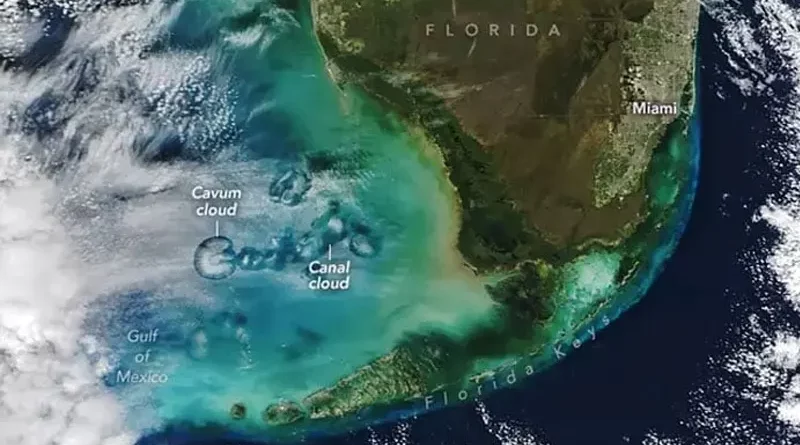Nasa’s satellite images show holes in sky near Florida — what are they?
The National Aeronautics and Space Administration’s (Nasa) Terra satellite stumbled upon a mesmerising sight over the Gulf of Mexico earlier this year over the Gulf of Mexico: clouds resembling giant punched-out holes in the sky.
This peculiar phenomenon, known as cavum clouds, has puzzled observers since the 1940s, often evoking comparisons to flying saucers or other unearthly entities.
Cavum clouds, alternatively dubbed hole-punch clouds or fallstreak holes, are anything but ordinary.
They’re massive enough to be visible both from Earth’s surface and outer space, captivating the imagination with their surreal appearance.
However, the mystery surrounding these atmospheric oddities was finally unravelled about 15 years ago as scientists discovered that cavum clouds owe their existence to human intervention.
When aeroplanes traverse through layers of mid-level altocumulus clouds — composed of supercooled droplets — a fascinating interplay of physics occurs, resulting in these remarkable formations.
Studies conducted by Nasa’s Langley Research Center revealed that the angle at which planes pass through these clouds directly impacts the size of the resulting cavum.
Remarkably, any type of aircraft, from commercial jets to private planes, has the potential to create these celestial spectacles.
Nasa’s Terra satellite captured striking images of a “cluster” of cavum clouds earlier this year near Florida’s west coast, a region bustling with over 1,000 flights daily from Miami International Airport.
The satellite, dedicated to monitoring Earth’s atmosphere and climate change effects, plays a crucial role in tracking the impact of human activities and natural phenomena on our planet’s delicate ecosystem.

